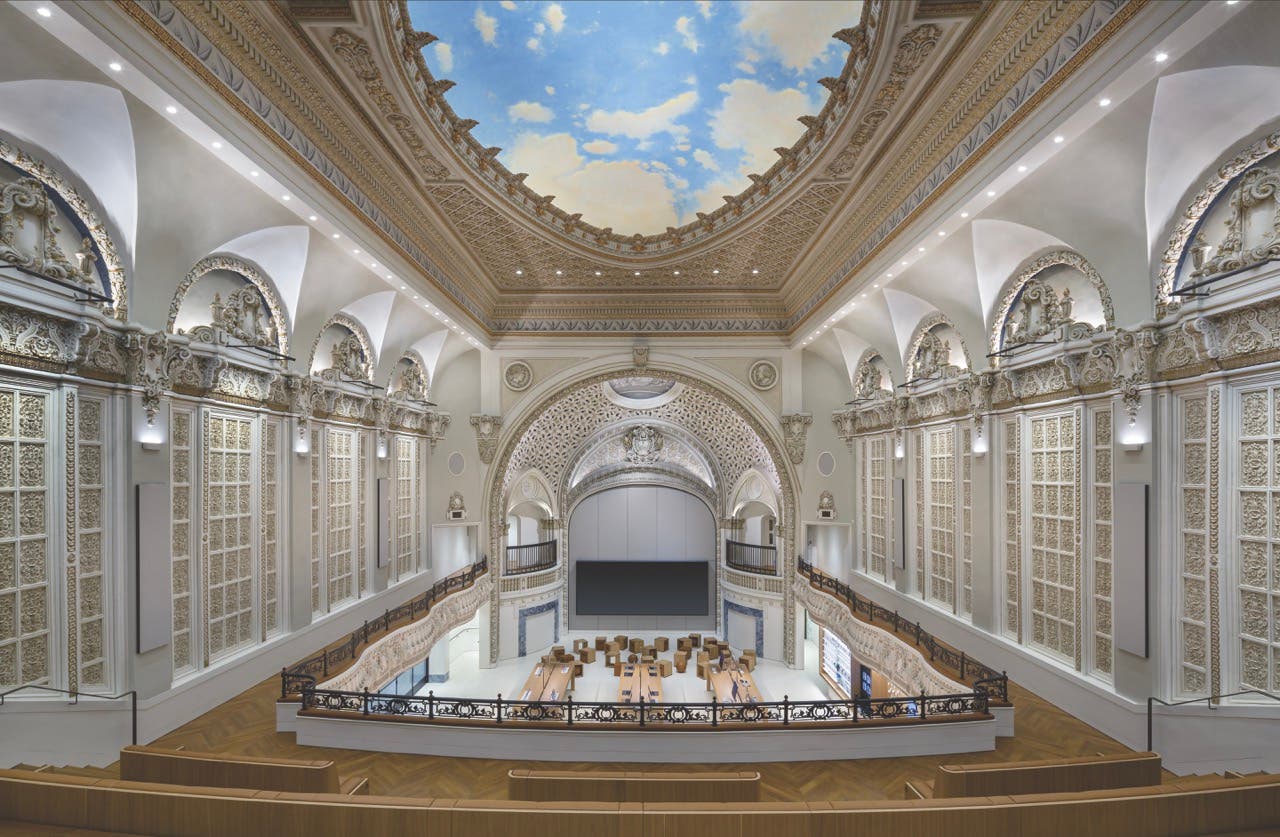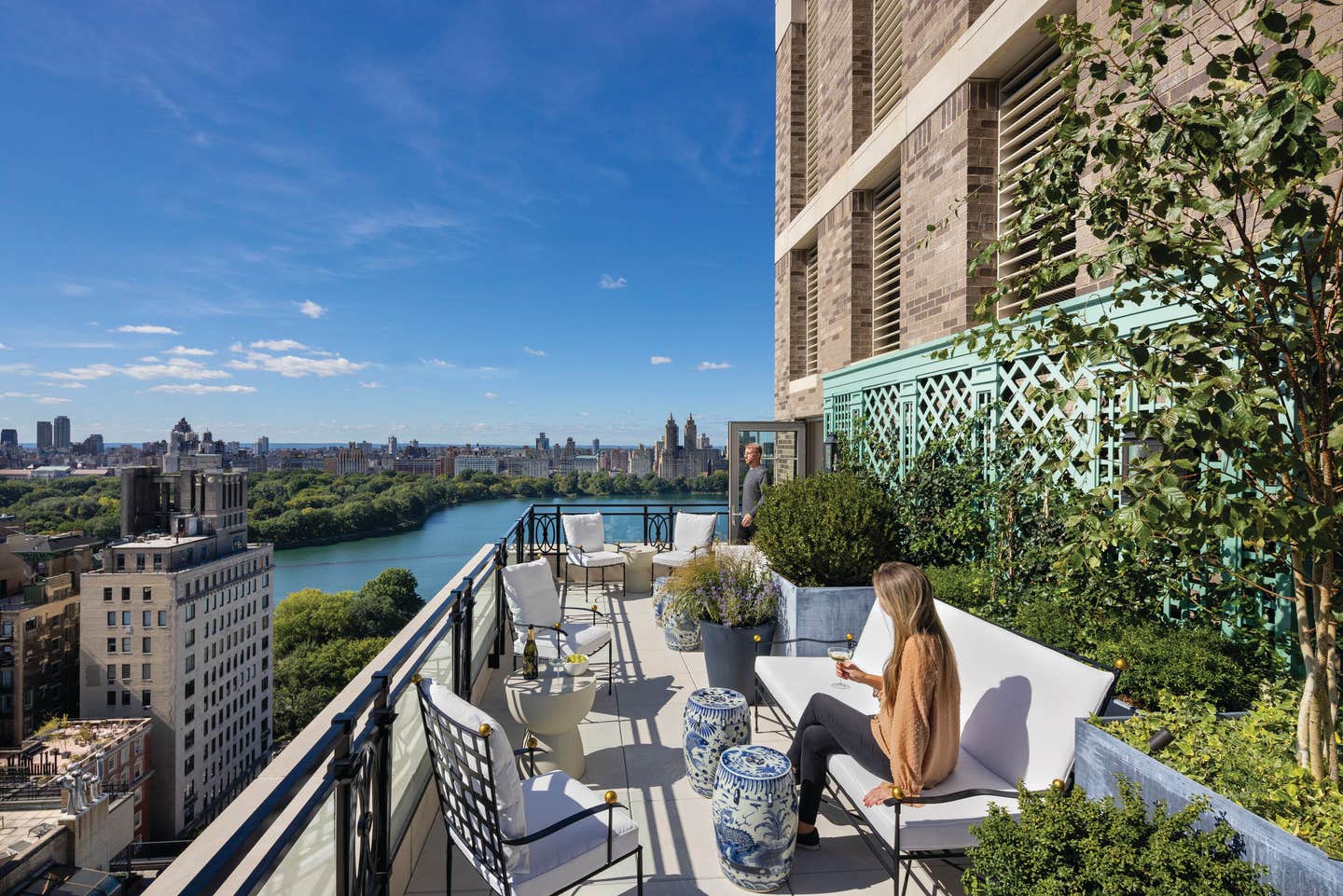
Features
Luxury Apartment Living in NYC
Coursing through Manhattan’s Upper East Side, Madison Avenue contains multitudes. Its sidewalks are famously crowded with stylish shoppers popping in and out of high-end boutiques, sure, but it’s also an eminently livable place that’s home to an abundance of families and a prime example of a residential area centered around high-rise buildings. “Madison Avenue is kind of like the Main Street of the Upper East Side,” says Paul Whalen, FAIA, partner at Robert A.M. Stern Architects (RAMSA).
It’s also defined by its architectural variety, where interwar brick buildings, Art Deco structures, and single-story jewel boxes blend harmoniously. So, when Whalen and RAMSA partner Michael Jones, AIA, designed 1228 Madison Avenue—a 15-unit high-rise residential building on 75,000 square feet about a block from Central Park in the Carnegie Hill neighborhood—they sought to draw from that surrounding architectural context while simultaneously making their own contribution. The result is breathtaking embodiment of modern Classicism, where shifting symmetries and setbacks, elegant brick and stonework, and thoughtful details from base to crown reflect the eclectic character of each home within. “That individuality,” Whalen says, “becomes a gift to the city.”
When Whalen and Jones happily leaned into Classicism and local precedents in crafting RAMSA’s first project on Madison Avenue, they also drew influence from their travels abroad to study the traditional styles of John Soane and Edwin Lutyens. “We didn’t just want to copy [what was] in the neighborhood,” Jones says. Further, they imagined the building as a “vertical village,” transposing the irregularity and graceful contrasts you’d find in the homes around a hamlet into a design that could capture its share of interest. “[We] wanted to make sure that it had enough sculptural qualities so that it would have its [own] unique personality,” Whalen says, “but have it fit into a street that’s full of unique personalities.”
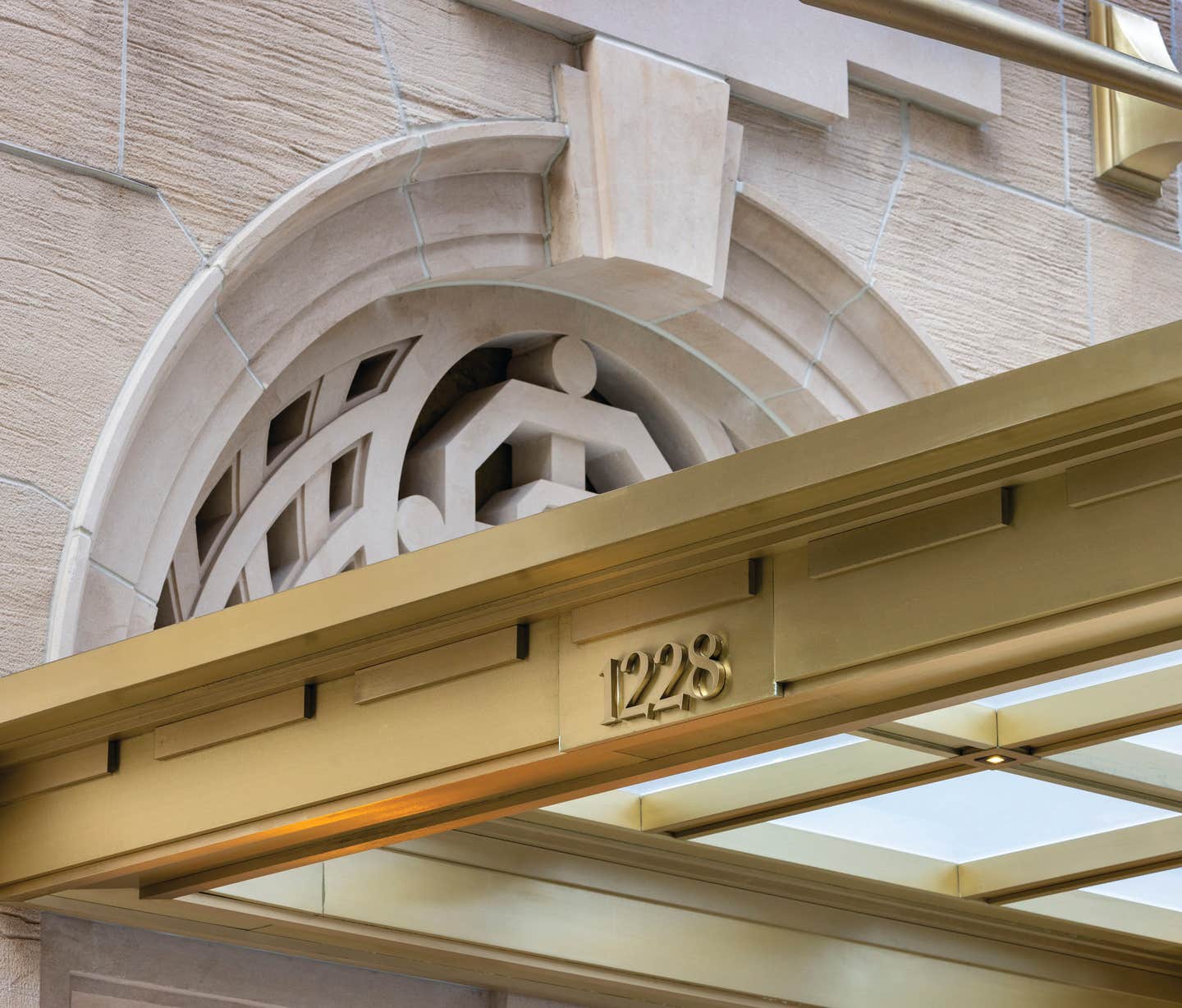
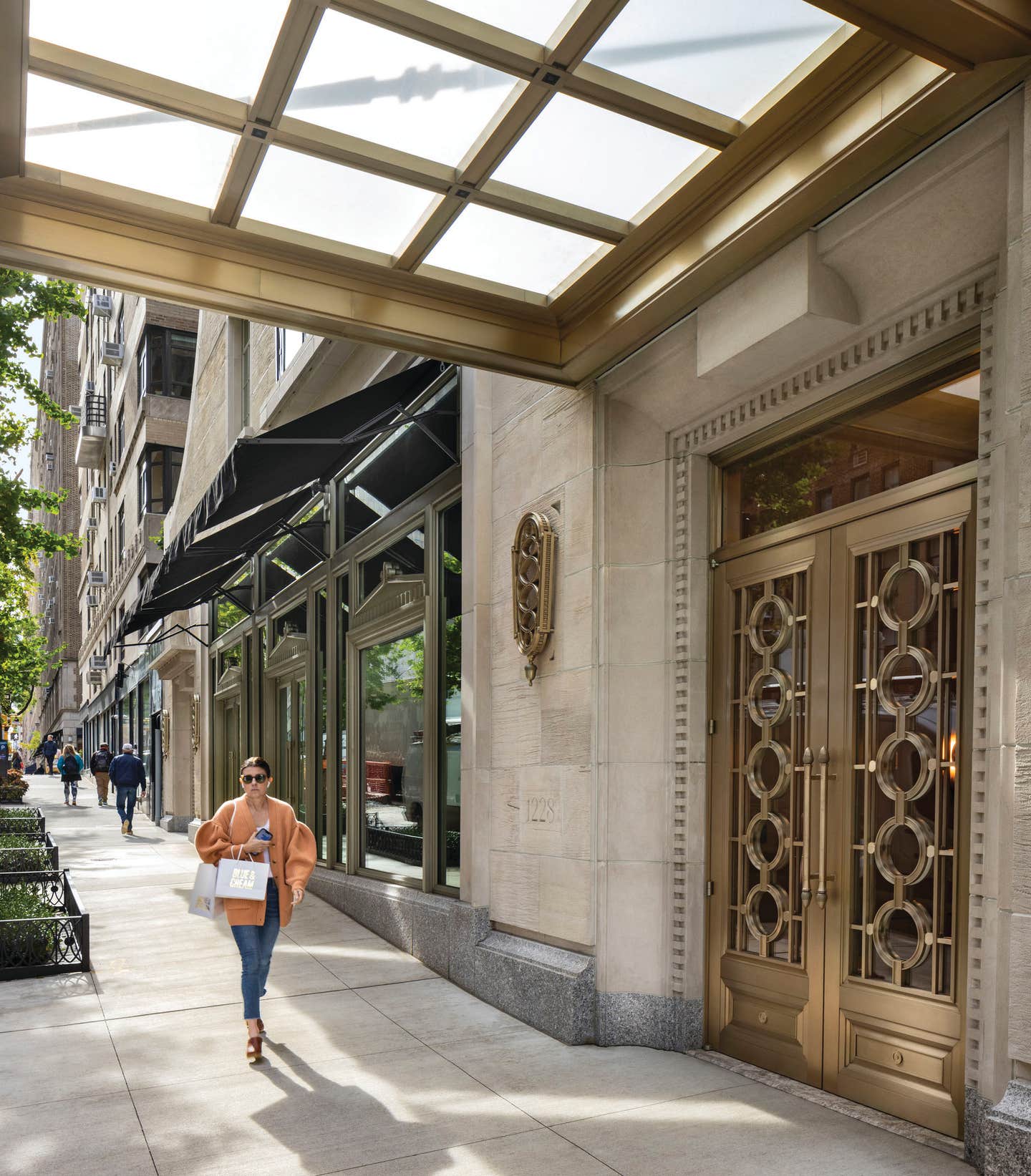
The singular identity of 1228 Madison Avenue is apparent from the street, where a shot-sawn Indiana limestone facade—which fit with the prewar buildings down the street while adding interesting texture and color—rises three stories and showcases Regency-style metal storefronts with large windows and low pediments. The German nickel canopy, lobby doors, and recessed sconces express a 1930s aesthetic at street level. Patterns of serpentine circles appear in the sconces, door screen, and an intricate stone filigree, riffing on a Lutyens-inspired motif that ties the building together.
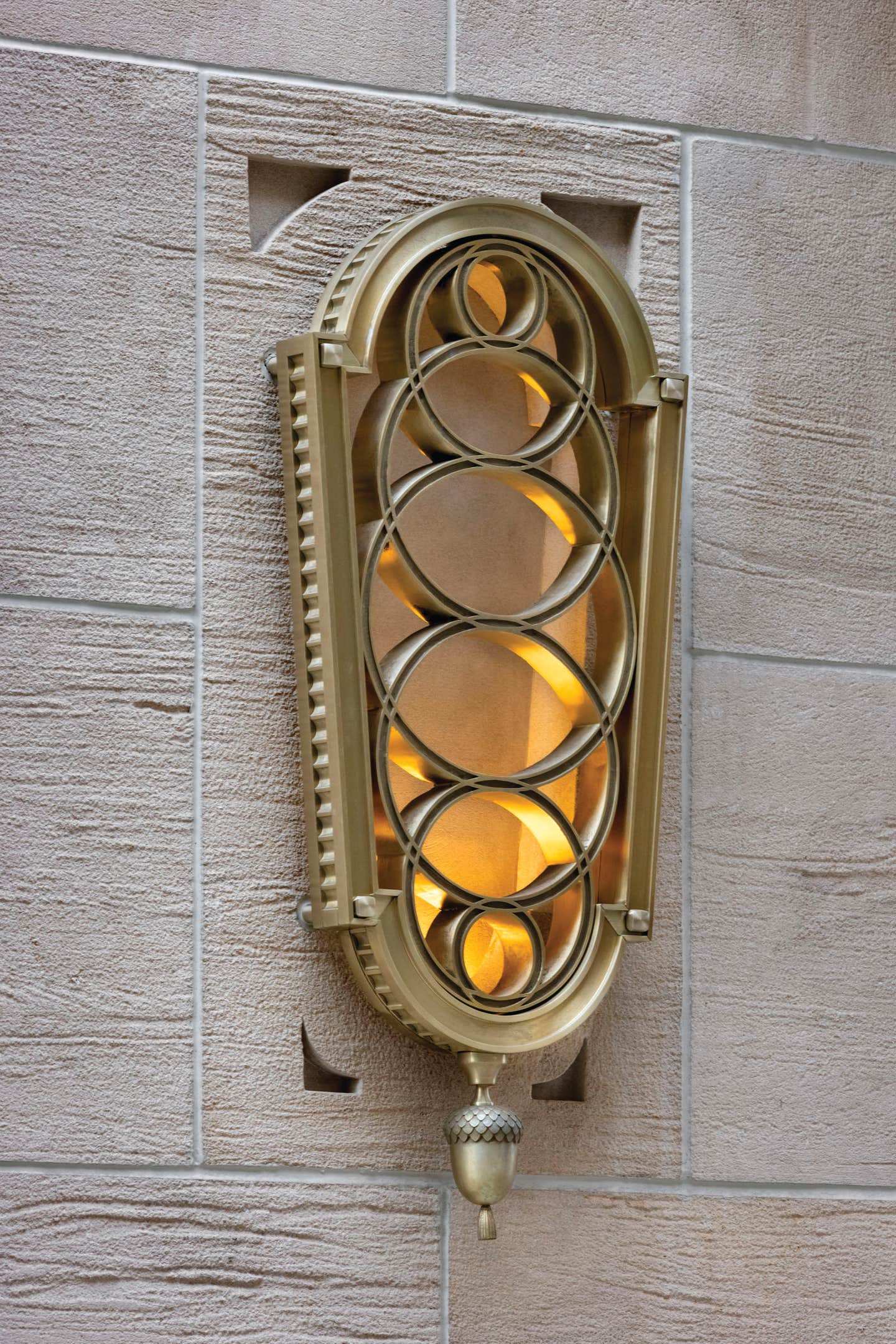
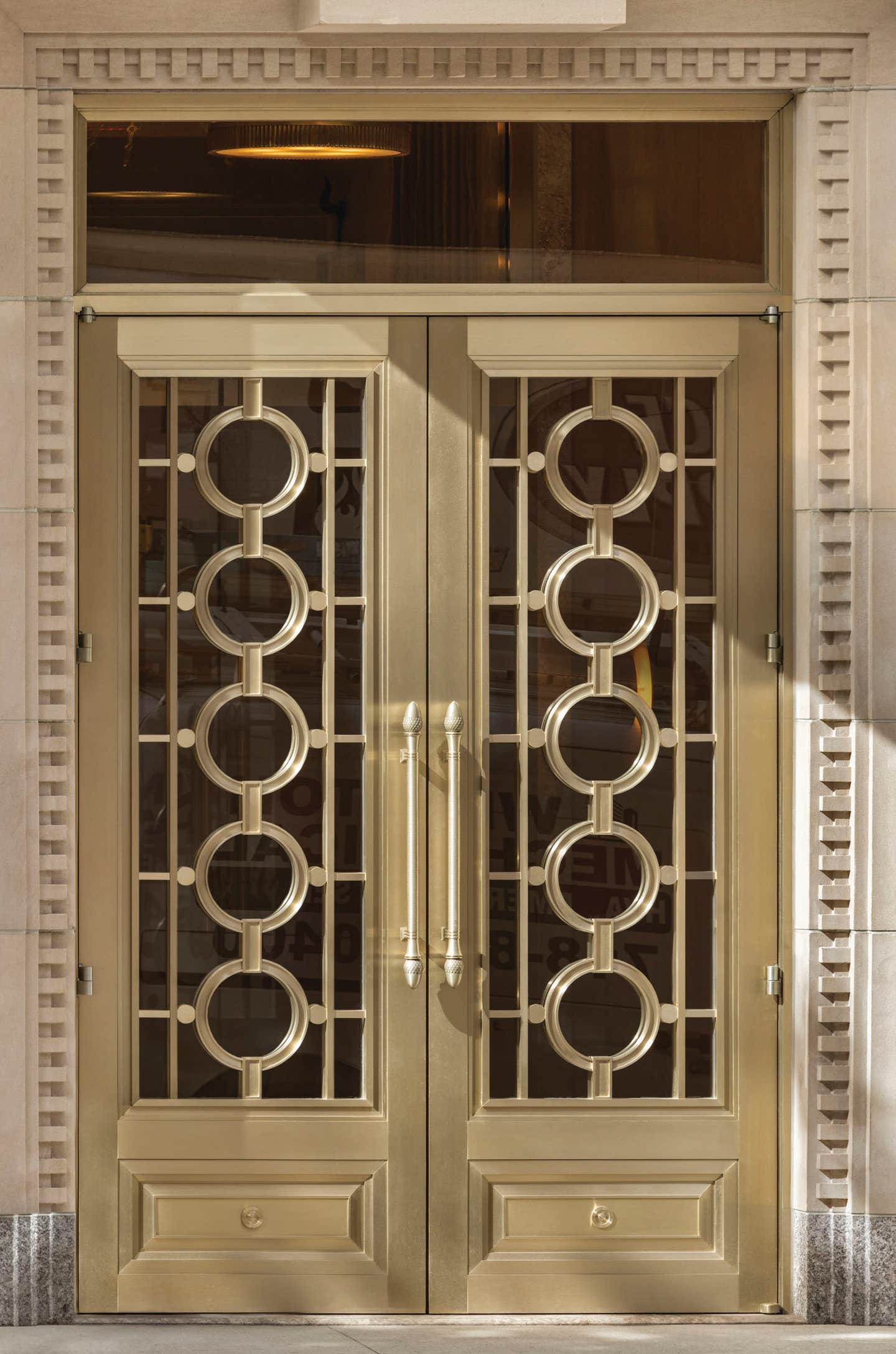
At lower scales, perhaps the most dramatic element is the buttress swooping from the first to third stories, recentering the base of the building and concealing a terrace adjoined to a second-story residence. (“It went from what could have been one of the least desirable apartments in the building to one of the most desirable,” Whalen says.) Setbacks reflect and delineate changing scales in street wall height from the 1860s to the 2020s. “They’re like the rings on a tree: this is the history of this neighborhood being marked in a very natural way on this building,” Whalen says.
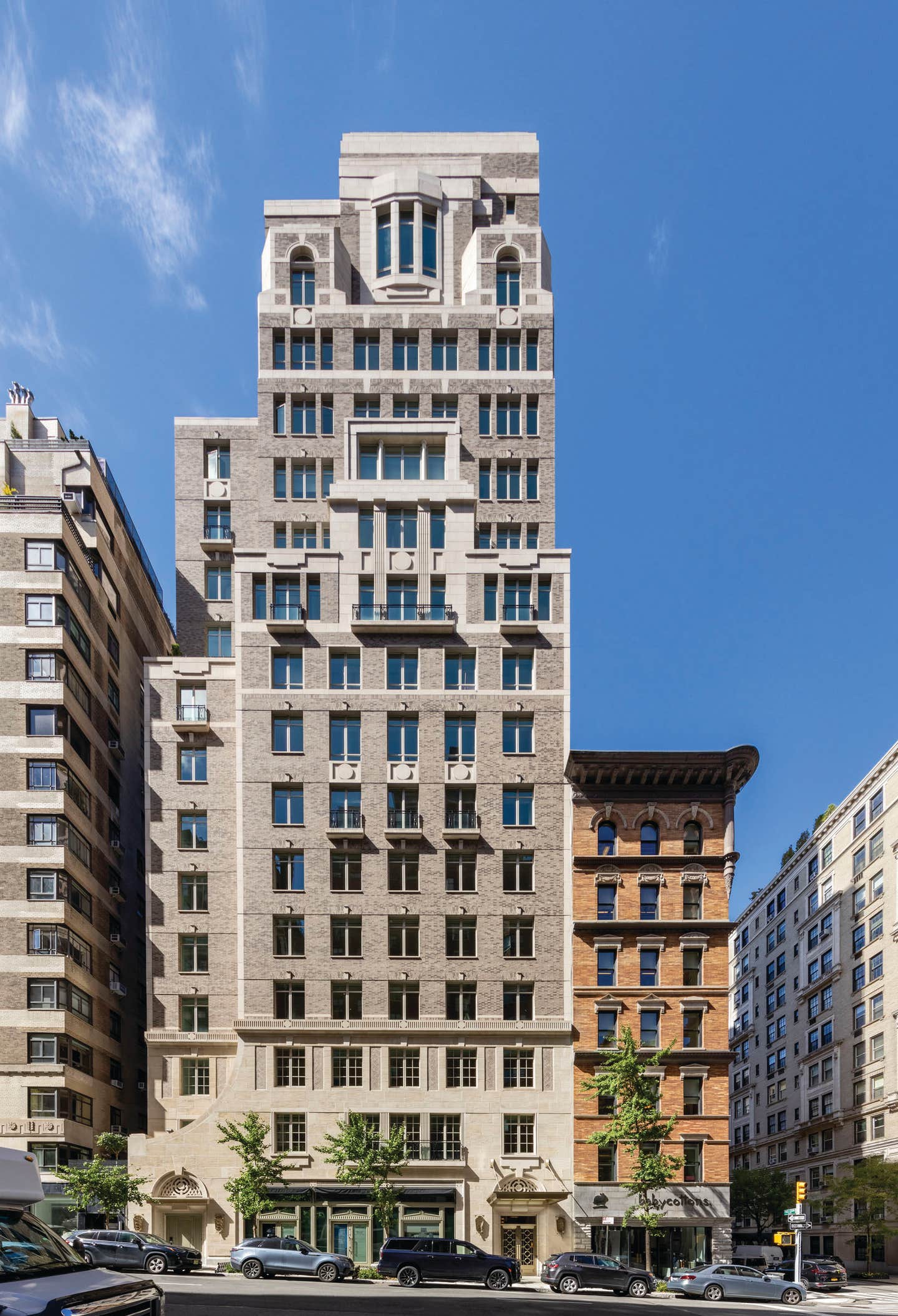
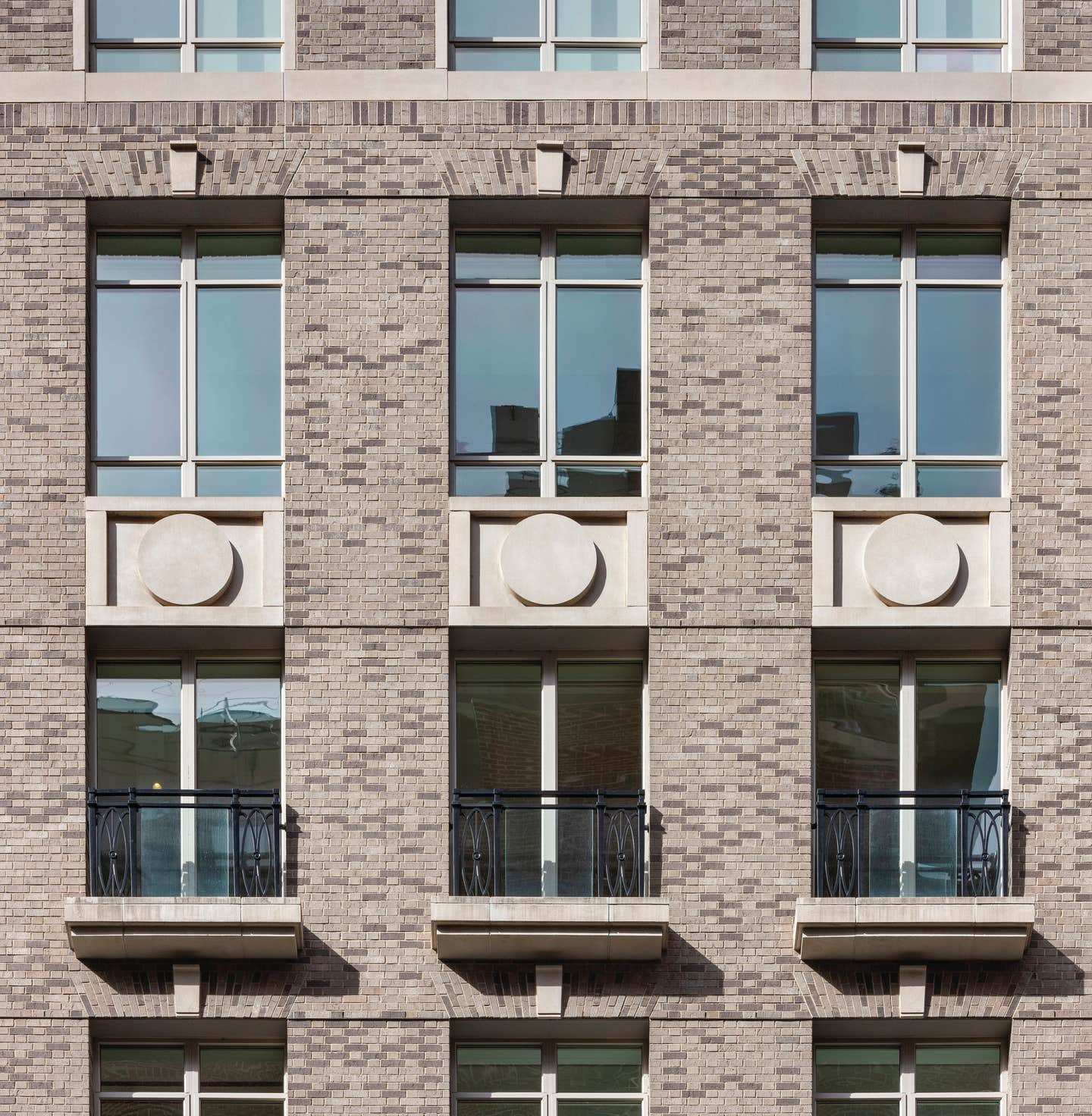

As the building rises, bricks play off stone elements in gloriously disparate ways, calculated to come together. In-set panels with a basket-weave configuration slip onto the limestone base. Above, Jones says, tricolored bricks in a Flemish bond “cover everything like a big, beautiful fabric,” transitioning into jack arches with keystones above the windows and soldier courses beneath the stone cornices. Arched and oxeye windows, French balconies, and custom metal railings referencing Austrian architect Otto Wagner overlook Madison Avenue.
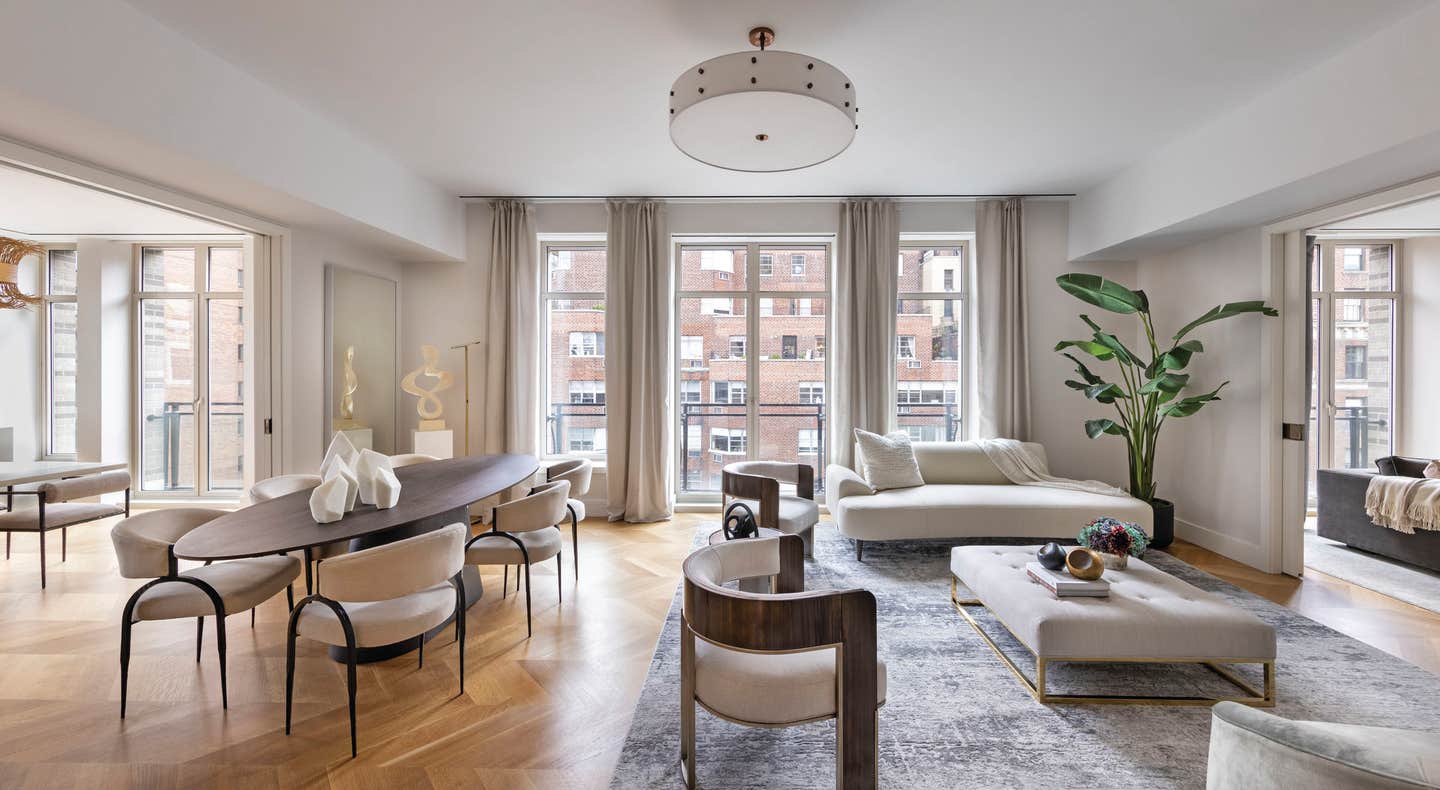
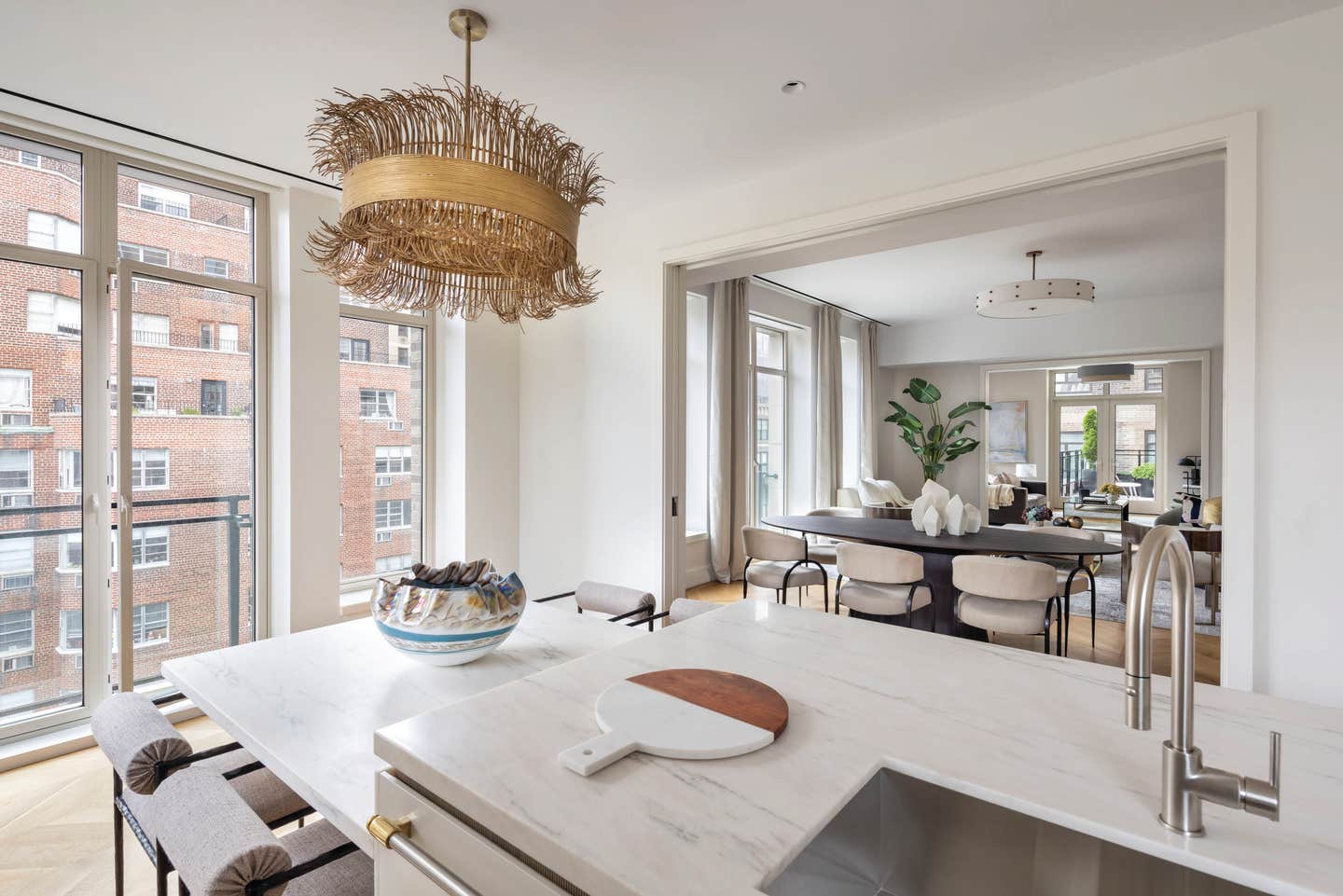
Ascending toward the upper floors, the building’s complicated massing calls back to Rosario Candela and reveals the distinctiveness of each floor plan in the exterior. “These apartments change from floor to floor,” Jones says. “There’s this idea of being individuals—[instead of] a filing cabinet filled with the exact same thing going up and down, there’s a lot of variety.” The interiors, meanwhile, were designed by Kelly Behun, whose minimalist, contemporary style was a pleasant foil to RAMSA’s traditional approach. (“We realized: it’s working,” Jones says. “She did a wonderful job.”) At the crown, where a roof terrace looks out to the Guggenheim Museum, a broken pediment lends the building an unmistakable profile in the skyline.
Ultimately, Whalen says, 1228 Madison Avenue evinces a deep understanding of the language of Classicism—not simply the words, but the syntax that ties those words together. By harnessing tradition, he hopes buildings like these inspire residents, passersby, and architects alike to embrace the possibilities inherent in high-rise living for the present moment. “We think that one of our chief jobs as architects is to make city living as special, interesting, charming, and personal as it is to live in a village,” Whalen says. “We’re trying to bring all that individuality, charm, and specialness to encourage more people to live here, because we think that more people should live in higher buildings. It’s a beautiful way to live.” TB





